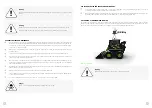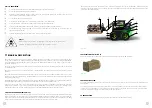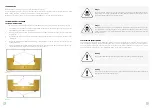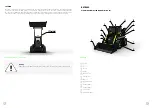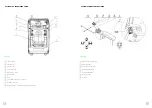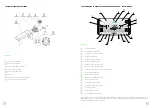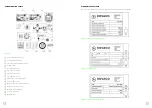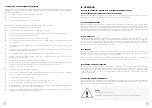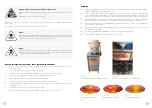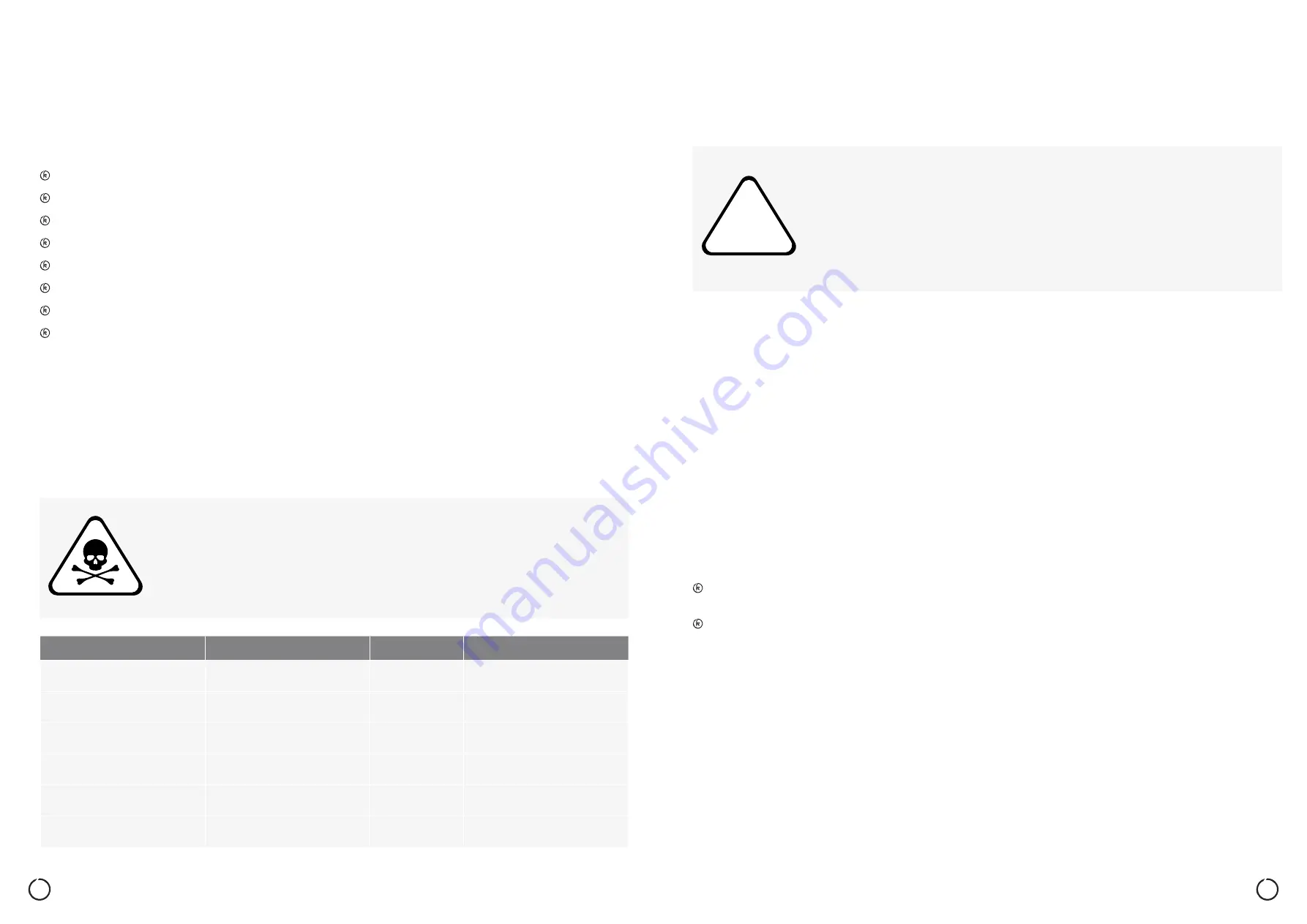
23
22
4.8 STABILITY
The loader stability tests have been performed in accordance with the latest technical standards; its stability is guaranteed
providing that the loader is used correctly and for the intended purpose. However, these standards only provide for static
and dynamic centrifugal forces that may manifest in the types of applications that are in accordance with the operating rules
and with the intended purpose.
Consequently, loss of stability or the risk of exceeding tolerable distribution of forces due to improper use or operation
cannot be completely excluded. Loss of stability can be prevented or minimized in the following ways:
Always secure the load against slipping, e.g. by tying.
Always transport precarious loads in suitable containers.
Always drive slowly when turning.
Drive with the load lowered.
Align the load as close to the center of the loader as possible.
Try to avoid turning when driving transversely on slopes or on sloping surfaces.
Never drive on slopes or sloping surfaces with the load facing downhill.
Do not drive on the edges of ramps or on stairs.
4.9 SPECIAL RISKS RELATED TO THE USE OF THE LOADER AND ITS ATTACHMENTS
If the loader is used in another than standard manner, or when the vehicle operator is unsure whether the loader can be
used properly and without the risk of accidents, consent of the machine manufacturer and the attachment manufacturer
must always be obtained.
5. OVERVIEW OF RISKS AND PREVENTIVE MEASURES
Danger
This table is meant as an aid in determining occupational Dangers and applies to all types of
drives. The table may not cover all possible Dangers.
Observe the national regulations of the country in which the loader is used!
DANGER
MEASURE(S)
CHECK NOTE
COMMENTS
Loader equipment does not comply with local
regulations
Inspection
O
If in doubt, contact the competent inspectorate
or insurance company that takes out employer’s
liability insurance.
Deficiencies in driver skills and qualifications
Driver training (internal and external)
O
-
Use by unauthorized persons
Access with key for authorized personnel
only
O
-
Loader is not in a safe condition
Repeated tests and elimination of
deficiencies
O
Decree on Safety and Health Protection in the
Operation of Technical Equipment
When recharging the traction battery
See the Decree on Safety and Health Protection
in the Operation of Technical Equipment or the
Operation and Maintenance Manual
O
Ensure proper ventilation; insulation value
within permissible range
When using battery chargers
See the Decree on Safety and Health
Protection in the Operation of Technical
Equipment
O
-
!
5.1 RISKS FOR STAFF
In line with the Decree on Safety and Health Protection in the Operation of Technical Equipment and applicable laws on occupa-
tional health and safety in the given country of operation, the operator is obliged to determine and assess operating risks and set
the necessary measures to ensure occupational health and safety of staff. The operator must therefore draw up an appropriate
operating manual and provide it to the driver. An authorized person must be appointed.
6. SAFETY
6.1 DEFINITIONS OF TERMS
6.1.1 OPERATOR
The operator is a natural person or legal entity that operates the loader, or under whose responsibility the loader is used.
The operator must ensure that the skid-steer loader is used only for the designated purpose and in accordance with the
safety regulations set out in these operating instructions.
The operator must ensure that all users have read and understood the safety information.
The operator is responsible for the schedule and correct execution of regular safety inspections. We recommend following
national operating specifications.
6.1.2 PROFESSIONAL
A qualified professional is defined as a mechanic or person who meets the following requirements:
Completed professional qualification for the work, which demonstrably confirms their professional knowledge.
Such proof of education is a vocational certificate or similar document.
Professional practice proving that the professional has gained practical experience with loaders during a confirmed period
of their professional practice. Over the period, the person has become acquainted with the full range of indications
that require inspections to be carried out, for example on the basis of the results of potential risk assessments
or daily checks.
Key is current professional practice in the field of operating loaders and other adequate professional qualifications. A qual-
ified professional must have experience in carrying out the said checks and inspections. Moreover, a qualified professional
must monitor current advances in technologies pertinent to the loader and to the risks assessed.
6.1.3 DRIVER/VEHICLE OPERATOR
This skid-steer loader may only be driven by a qualified person who has reached at least 18 years of age, has obtained
a driver’s licence, has demonstrated experience in driving and handling towards the operator or authorized representa-
tive and has received special training in driving the loader. Special knowledge of the respective skid-steer loader is also
required.
The requirements for training in accordance with § 3 of the Act on Health and Safety at Work and § 9 of the Decree
on Safety in the Workplace are met if the driver has been trained in accordance with the requirements. Follow the applica-
ble regulations in your country.
Warning
The design and equipment of this loader comply with Directive 2006/42/EC on machinery
and are marked with the CE symbol. These elements are not included in the risk assessment. The
attachments have their own CE markings and thus are also not included. Nevertheless, the opera-
tor must choose a type of loader and its accessories that comply with local operating regulations.
Содержание Elise900
Страница 1: ...Elise900 User Manual for Operation and Maintenance ...
Страница 2: ...KOVACO Electric a s 1st edition 2020 ...
Страница 44: ...Elise900 Manual for the Kovaco Application ...
Страница 50: ...NOTES NOTES ...
Страница 51: ...COPYRIGHT KOVACO Electric a s All rights reserved ...


















